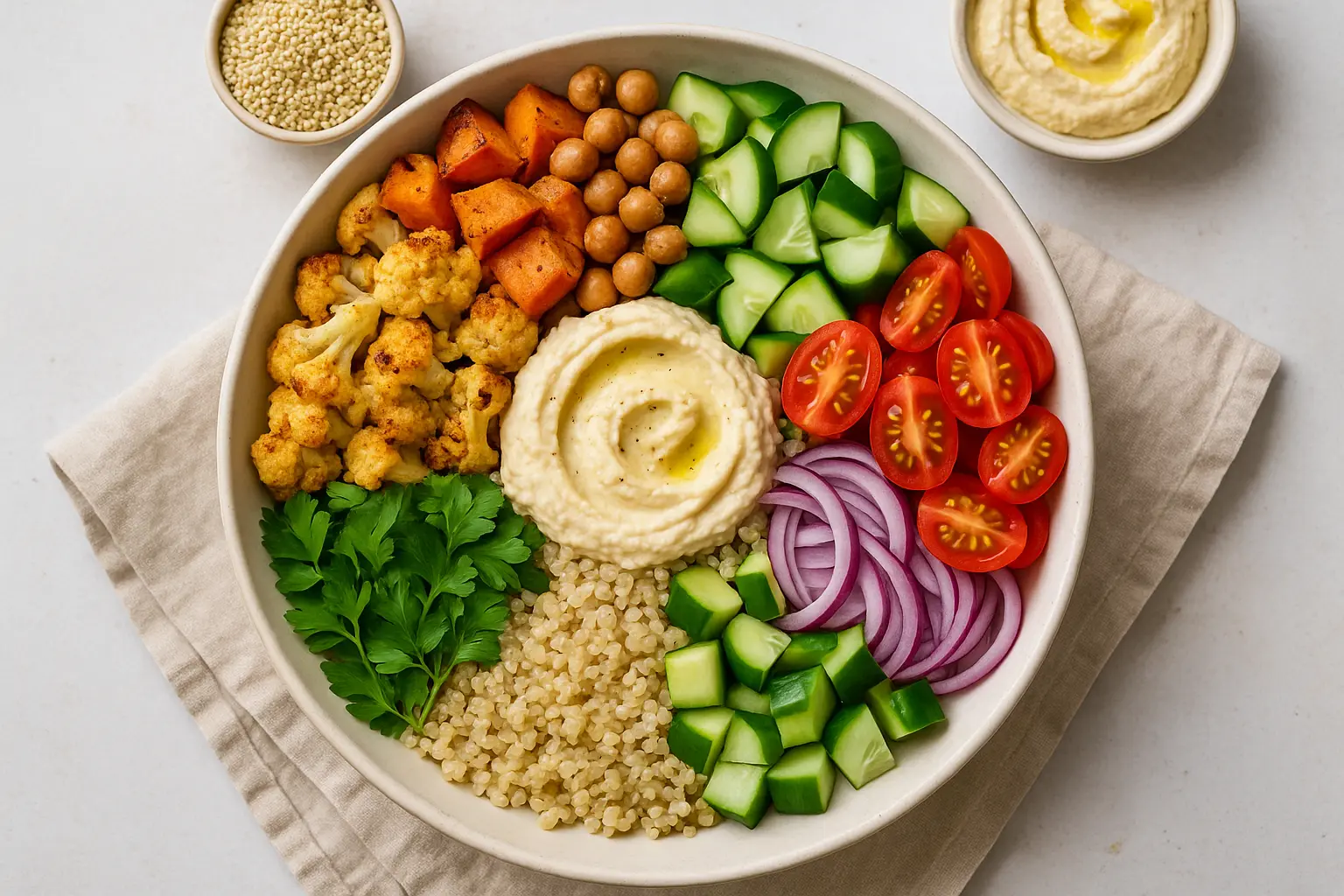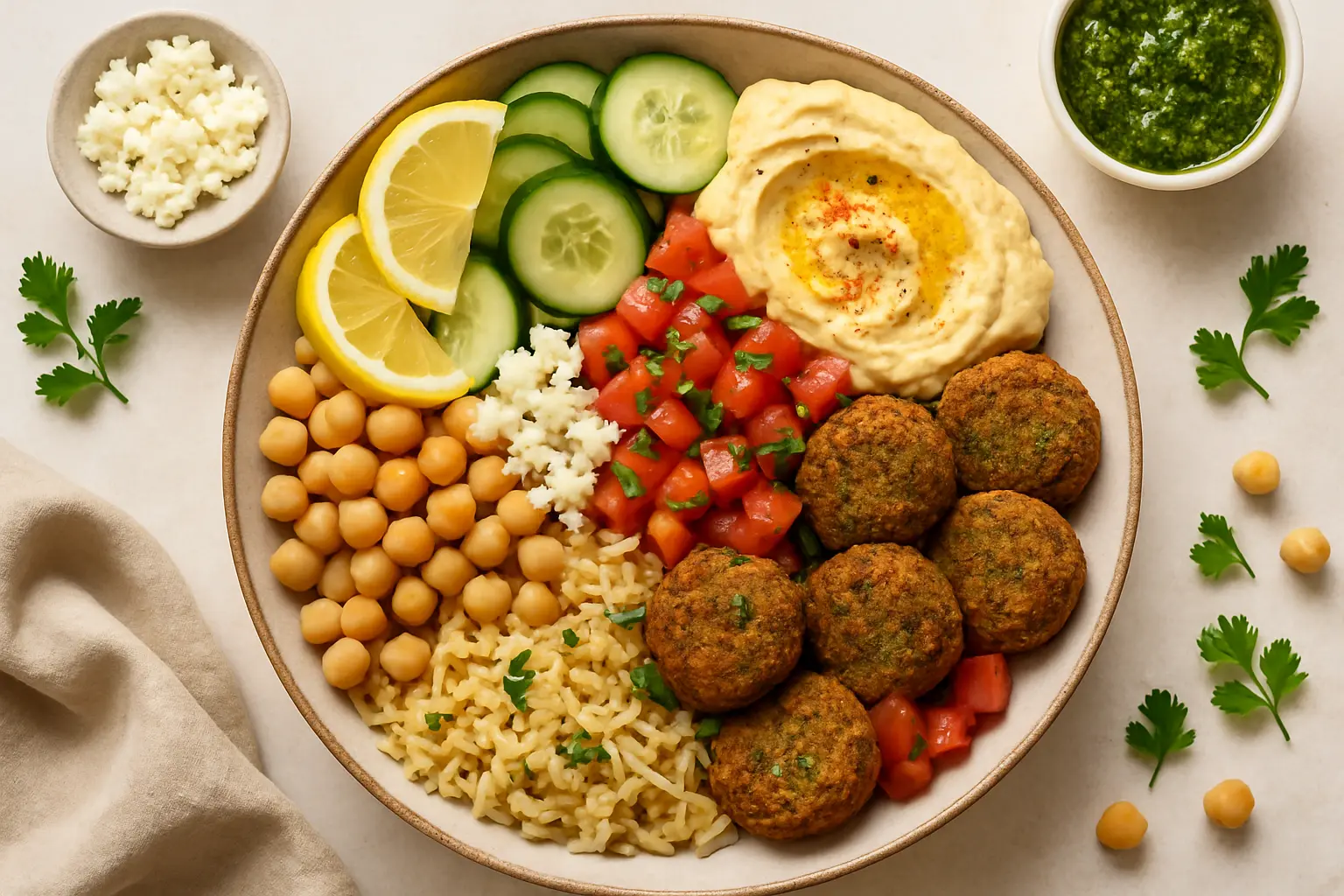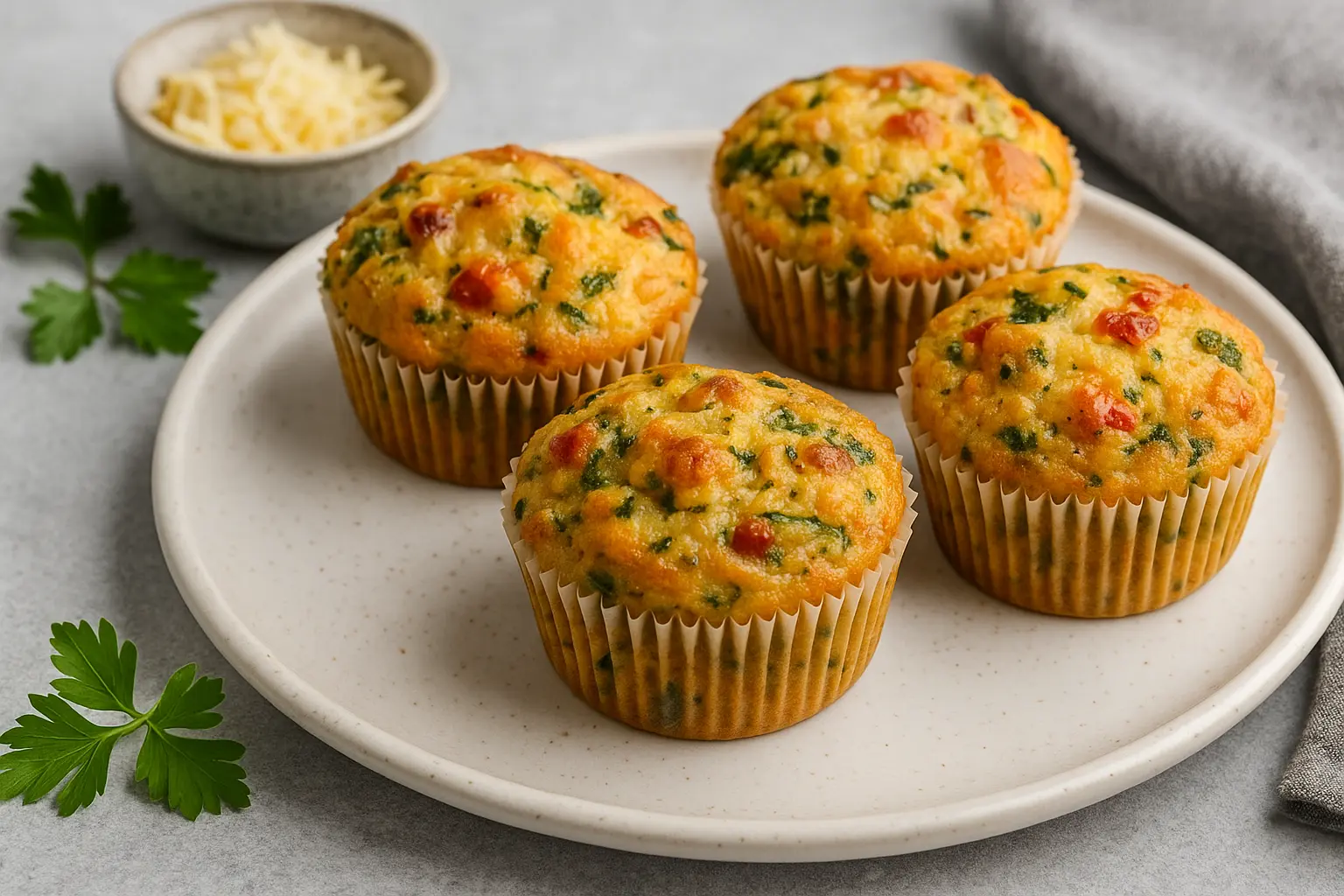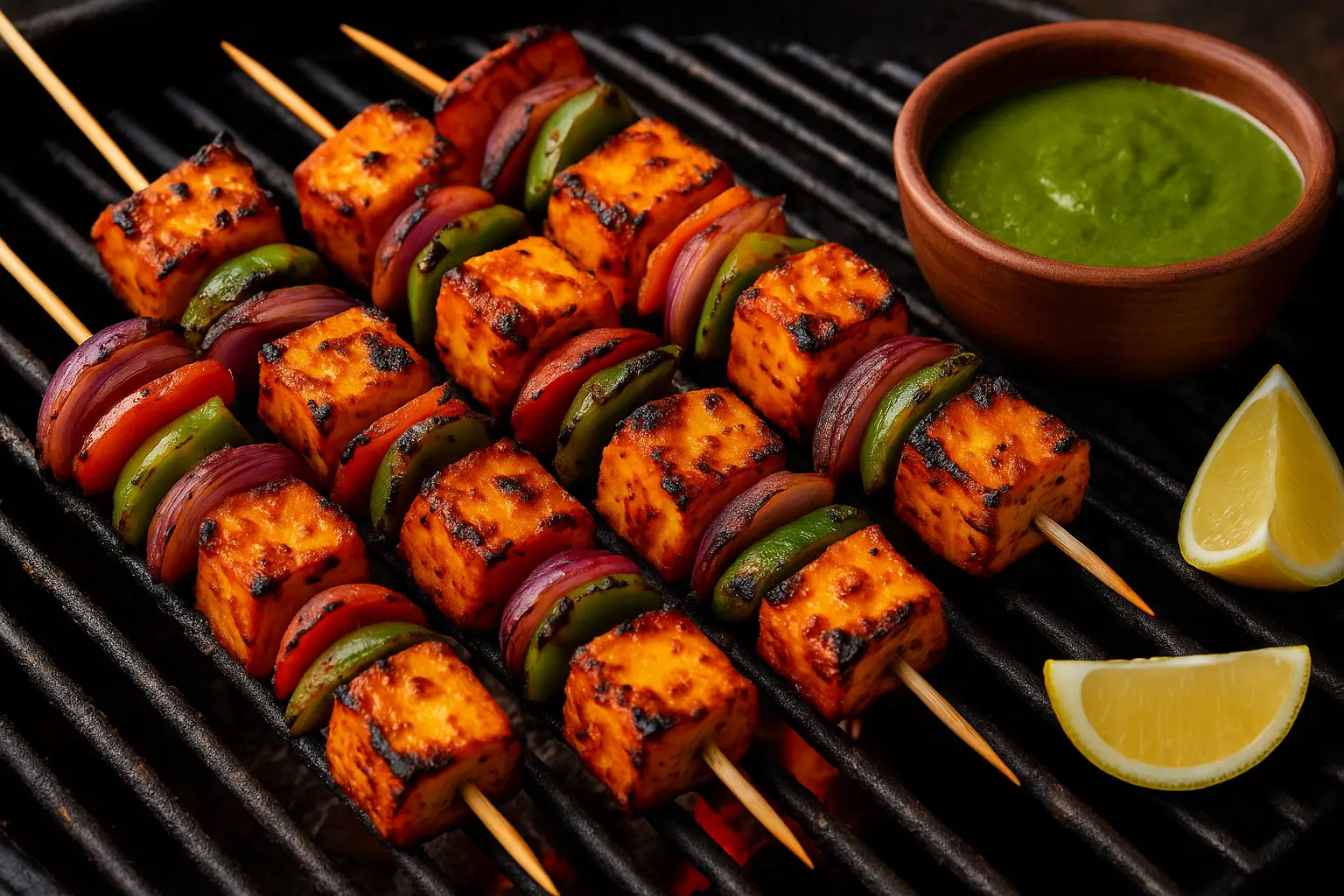When it comes to quick, flavorful, and nutritious meals, the Mediterranean diet consistently tops the list. Rich in vegetables, whole grains, legumes, olive oil, and fresh herbs, this eating style is not only delicious but also backed by years of research showing its benefits for heart health, weight management, and overall wellness.
But in our busy schedules, cooking elaborate meals every day can feel overwhelming. That’s where Mediterranean lunch bowls come in—a versatile, customizable, and make-ahead option that ensures you’re eating well even when life gets hectic.
This guide will walk you through everything you need to know about building your own crave-worthy bowls: from core ingredients and flavor pairings to specific recipes, meal prep strategies, and creative variations. By the end, you’ll be able to mix and match your way to over a dozen unique lunch bowl ideas without ever getting bored.

What Makes a Mediterranean Bowl Special?
Unlike traditional grain bowls or salad bowls, a Mediterranean lunch bowl layers balance and variety:
- Whole grains or legumes for a hearty base (think quinoa, bulgur, farro, chickpeas, or lentils).
- Fresh vegetables in abundance—raw, roasted, or pickled.
- Plant-based protein like beans, hummus, falafel, or halloumi cheese.
- Healthy fats in the form of olives, tahini, nuts, or extra-virgin olive oil.
- Bright herbs and spices such as parsley, mint, dill, za’atar, or sumac.
- Simple dressings that bring it all together: lemon-tahini, yogurt-garlic, or olive oil vinaigrettes.
It’s a combination that guarantees flavor, satiety, and nutrition in every bite.
Core Ingredients for Mediterranean Lunch Bowls
1. The Base: Grains and Legumes
- Quinoa: Protein-packed and gluten-free.
- Bulgur wheat: Traditional in tabbouleh and quick to cook.
- Brown rice or wild rice: Hearty and filling.
- Lentils: Green, brown, or black—perfect for earthy flavor.
- Chickpeas: Roasted or soft, they add texture and protein.
2. Vegetables: Fresh and Roasted
- Fresh: cucumbers, cherry tomatoes, bell peppers, red onion.
- Roasted: zucchini, eggplant, carrots, cauliflower, sweet potatoes.
- Pickled: red onions, turnips, or even fermented beets for tang.
3. Protein Power
- Plant-based: hummus, falafel, lentil patties, white beans.
- Dairy: feta, halloumi, Greek yogurt dips.
- For flexitarians: grilled chicken, tuna, or salmon.
4. Toppings & Dressings
- Dressings: tahini-lemon, tzatziki, olive oil + balsamic.
- Extras: olives, nuts (almonds, pine nuts), seeds (sesame, pumpkin), fresh herbs.
Building the Perfect Mediterranean Bowl (Step-by-Step)
- Choose your base (grain or legume).
- Add 2–3 servings of vegetables—mix fresh with roasted for variety.
- Pick your protein (hummus + falafel, lentils + feta, or beans + halloumi).
- Drizzle with a dressing—a tangy sauce ties the meal together.
- Finish with toppings like herbs, seeds, or crunchy pita chips.
5 Tried-and-True Mediterranean Lunch Bowl Recipes
1. Classic Chickpea & Quinoa Bowl
- Base: Quinoa + chickpeas.
- Veggies: Cucumber, tomato, red onion.
- Protein: Hummus swirl.
- Dressing: Lemon-tahini.
- Topping: Fresh parsley + toasted pine nuts.
2. Roasted Veggie & Lentil Bowl
- Base: Green lentils.
- Veggies: Roasted zucchini, eggplant, carrots.
- Protein: Crumbled feta.
- Dressing: Olive oil + za’atar.
- Topping: Fresh mint leaves.
3. Falafel & Tabbouleh Bowl
- Base: Bulgur tabbouleh.
- Protein: Crispy baked falafel.
- Veggies: Cucumber, tomato, parsley.
- Dressing: Tahini-garlic sauce.
- Topping: Pickled onions.
4. Halloumi & Sweet Potato Bowl
- Base: Roasted sweet potato cubes.
- Protein: Grilled halloumi slices.
- Veggies: Spinach, roasted red peppers.
- Dressing: Yogurt-lemon sauce.
- Topping: Toasted sesame seeds.
5. Mediterranean Tuna Bowl (Flexitarian)
- Base: Brown rice.
- Protein: Olive-oil packed tuna.
- Veggies: Olives, cucumber, arugula.
- Dressing: Olive oil + red wine vinegar.
- Topping: Dill + lemon zest.
Meal Prep Tips for Busy Weeks
One of the biggest advantages of these bowls is how easily they fit into a meal prep routine:
- Cook grains and legumes in bulk on Sunday.
- Roast a tray of seasonal vegetables to mix across multiple bowls.
- Make a large jar of tahini dressing or yogurt sauce to last 4–5 days.
- Store bases, veggies, and proteins separately, then assemble when ready to eat to avoid sogginess.
Nutritional Benefits of Mediterranean Bowls
- Heart Health: Rich in olive oil, nuts, legumes, and whole grains.
- Weight Management: High fiber keeps you full longer.
- Plant Power: Most bowls can be fully vegetarian or vegan.
- Balanced Macros: Protein, healthy fats, and carbs in every bowl.
Creative Variations
- Seasonal twist: Add roasted pumpkin in autumn or fresh watermelon + feta in summer.
- Protein boost: Add a boiled egg or extra beans for workout recovery.
- Low-carb version: Replace grains with cauliflower rice or leafy greens.
- Kid-friendly bowls: Swap raw onion with milder veggies like carrots or cherry tomatoes.
Mediterranean Flavor Combos You’ll Love
- Tomato + cucumber + feta + olives = Greek-inspired freshness.
- Roasted eggplant + tahini + parsley = classic Middle Eastern combo.
- Bulgur + mint + lemon + pomegranate seeds = vibrant and refreshing.
- Lentils + carrots + cumin + olive oil = earthy comfort.
FAQs
1. Can I make these bowls vegan?
Yes—just skip cheese or yogurt-based dressings and use tahini, hummus, or nut-based sauces.
2. How long do they last in the fridge?
Up to 4 days if stored in airtight containers. Keep dressings separate until serving.
3. Can I freeze Mediterranean lunch bowls?
Cooked grains, legumes, and roasted veggies freeze well. Fresh ingredients (like cucumbers or tomatoes) should be added after thawing.
4. Are they good for weight loss?
Absolutely. With controlled portions and high fiber, they keep you full and energized without excess calories.
Conclusion
Mediterranean lunch bowls are more than just a trendy meal—they’re a practical, delicious way to bring the essence of the Mediterranean diet into your everyday routine. With their endless versatility, nutrient-rich ingredients, and make-ahead convenience, these bowls can turn your weekday lunches into something you actually look forward to.
Whether you love the simplicity of a chickpea and quinoa bowl or crave the richness of halloumi with roasted veggies, you can mix and match these ideas endlessly.
So next time you’re stuck in a lunch rut, remember: with a few grains, some fresh vegetables, and a drizzle of lemon-tahini dressing, you can create a Mediterranean masterpiece in under 30 minutes.
Leave a comment
Your email address will not be published. Required fields are marked *




















